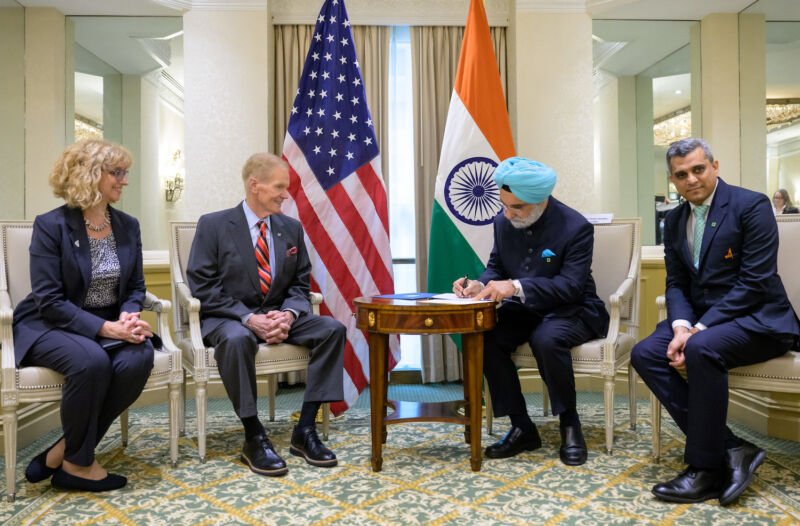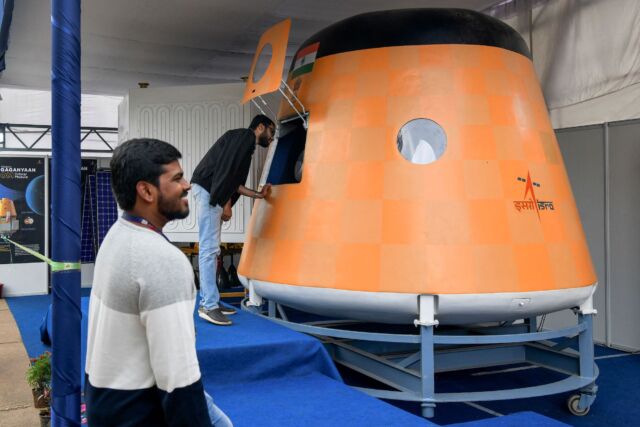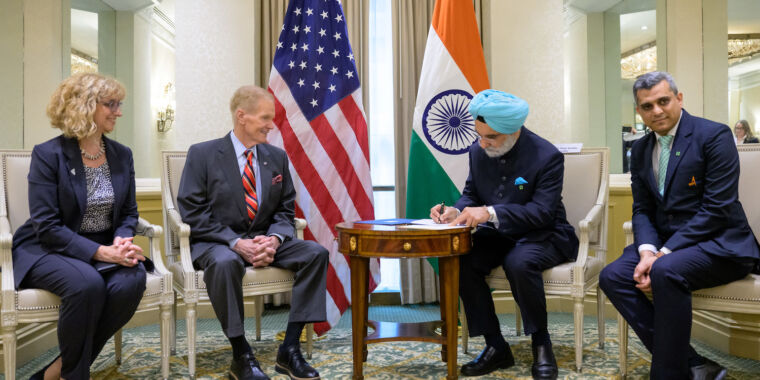
When India’s ambassador to the US signed his country to the Artemis Accords last month, it was a sign that the world’s most populous country – with a growing capability in spaceflight – could turn to the United States as a partner in space exploration .
India became the 27th country to sign the Artemis Accords, a non-binding set of principles among like-minded nations guiding a vision for peaceful and transparent space exploration. The accords include the international registration of man-made space objects, the open release of scientific data, and an agreement for nations not to claim territory on the moon or other planetary bodies.
The Artemis Accords began under the Trump administration, an effort spearheaded by former NASA administrator Jim Bridenstine and Mike Gold, a lawyer and former aerospace industry official. Bill Nelson, the NASA chief under President Biden, has embraced the accords. He said the principles are “just common sense”.
“You come to someone’s aid in need… You try to have common parts, you respect each other’s territory,” Nelson said.
Details of future US-India cooperation remain scarce. Nelson plans to travel to India later this year for meetings and talks with Indian space officials. One of the goals of Nelson’s journey will be to formulate broad objectives for a “strategic framework” for human spaceflight cooperation.
Despite the name of the Artemis Accords, there’s no guarantee that India will play a major role in NASA’s Artemis program to send astronauts back to the moon and ultimately send humans to Mars.
“There is no implication that a signatory to the Artemis Accords is also part of the Artemis program,” Nelson told Ars.
But none of the other 26 signatories to the Artemis Accords — a list that includes European space powers and Japan — have their own human spaceflight program. India is developing a human-rated spacecraft called Gaganyaan that could be ready to fly humans into low Earth orbit by 2025, several years later than originally planned.

“The fact that they are a nation that plans to fly their own astronauts in the future, is that important? The answer is yes,” Nelson said. “I think it matters that a major country that is not considered affiliated with the US be a signatory.”
“I have described India as a sleeping giant that soon awakens,” Gold told Ars. now even manned space flight.”
Through the Artemis program, NASA hopes to land astronauts on the lunar surface for the first time since 1972 later this decade. new spacesuits from Axiom Space and a new human-assessed lunar lander from SpaceX continue to be developed and tested.
What’s next?
Where India could fit into the Artemis program is yet to be determined. But India has launched as many space missions this year as Japan and Europe combined, with another milestone launch later this month with a robotic spacecraft that will mark India’s second attempt to achieve a controlled landing on the moon, after a failed launch. landing in 2019.
India successfully sent a spacecraft to Mars a decade ago, and international satellite operators regularly rely on Indian rockets to launch their missions into orbit.
“They come to Artemis with activities that are already directly relevant to the program,” Gold said of India. “Neither the United States nor India need to change course completely. Their activities are already very complementary.”
Before the signing of the Artemis Accords, the Indian Space Research Organizations – the Indian space agency – and NASA were already working together on an advanced radar Earth observation satellite called NISAR, scheduled for launch in 2024. An Indian satellite was launched in the 1980s with the space shuttle launched.
But ISRO and NASA have not collaborated in any significant way on human spaceflight or space exploration.

